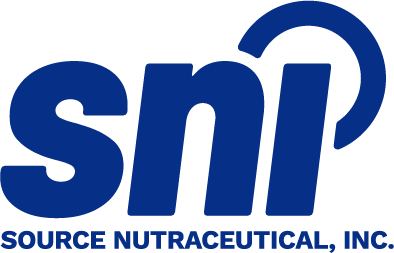Finished Product Specifications (FPS) are crucial documents that outline the minimum quality standards an Natural Health Product (NHP) must meet before it can be imported, sold, or distributed in Canada. These specifications are mandated under Health Canada’s Natural Health Products Regulations (NHPR), and every NHP must strictly comply with the specifications outlined in its product licence application.
FPS documents serve two primary roles:
Regulatory Compliance – a FPS demonstrates to Health Canada that each batch of manufactured product has undergone appropriate testing, confirming that the NHP meets all required safety, efficacy, and quality standards.
Quality Assurance – Internally, a FPS act as internal tools to verify that the product has been consistently manufactured and tested in line with the specifications approved by Health Canada before being released to the market.
The FPS outlines important criteria, including the identity, potency, purity, microbial limits, and stability of the product. These specifications must be met consistently throughout the product’s shelf life to ensure the ongoing safety and performance of the finished product. This guide covers the key components of a compliant FPS, how to develop one, and how to maintain and update specifications as needed.
For example, in a product like a multivitamin, the FPS would define the exact amount of each vitamin and mineral, ensuring that the final product contains the specified levels for the intended health benefits (claims) per the product licence. If the product is an herbal supplement, the FPS would detail the type of plant extract, its active constituents, and any potential contaminants that need to be controlled, such as heavy metals or pesticide residues.
Recognized Testing Methods for NHPs
Testing methods for NHPs must be reliable, reproducible, and appropriate for the ingredients and product being assessed. Health Canada requires that testing methods reflect those outlined in recognized pharmacopeias such as the United States Pharmacopeia (USP), the British Pharmacopoeia (BP), and the European Pharmacopoeia (Ph. Eur.), where applicable. These pharmacopeial references provide standardized procedures for assessing a range of substances used in NHPs, including vitamins, minerals, amino acids, and herbal extracts.

For instance, if a product contains vitamin C, the FPS might reference the USP monograph for vitamin C and recommend testing using High-Performance Liquid Chromatography (HPLC) to confirm its amount in the product. This method is widely recognized for its accuracy and reproducibility, ensuring that the amount of vitamin C in the product aligns with the label claim.
When a pharmacopeial method is available, it must be used to assess key quality parameters such as identity, potency, and purity. For example, HPLC may be used to determine the amount of vitamin C in a product following a validated procedure from the USP. However, if no pharmacopeial method is available for a specific ingredient (like an uncommon herb or a novel ingredient), manufacturers can use in-house or alternative methods, provided they offer a scientific rationale to demonstrate reliability and suitability.

To illustrate, if a new herbal extract is used in a product and no pharmacopeial method exists for testing, the manufacturer might use a validated HPLC method to assess the active compounds in the extract. They would provide supporting data to demonstrate that the method is scientifically appropriate for the product. It’s crucial to document and justify any alternative methods in the FPS, as this helps ensure the reliability of the testing and the safety of the final product.
Overview of the Finished Product Specifications (FPS)
Each FPS submitted to Health Canada at the time of product licensing contains critical elements related to product specifications and testing methods. These sections include the following:
General Product Information – The FPS must include general product information such as declaration of the primary brand name and dosage form of the product. The available product dosages include capsule, tablet, liquid, and other formats. For products with formats that have not been listed on the FPS, applications can select the “other” box and specify the dosage form. For instance, “other” can be selected for effervescent tablets. Information listed on the FPS should match the product licence application (PLA) and ultimately the product label.

Product Type – This section categorizes the ingredients in the NHP, such as classifying piperine as an “isolate” or papain as an “enzyme.” Identifying the product type helps determine the appropriate testing methods and ensures accurate labelling. For instance, an enzyme like papain would require specific testing methods for activity (e.g., enzyme assay), while an isolate like piperine would need to be tested for purity and concentration using methods like HPLC. All relevant product types need to be selected.
Quantity of Medicinal Ingredient – This specifies the amount of each medicinal ingredient and the acceptable tolerance limits. For example, a product containing ginseng might specify that it contains 100 mg of the root extract per dose, with a tolerance of ±20%. Health Canada prefers that medicinal ingredients be assayed in the finished product, but when this is not feasible, manufacturers may use input-based quantification, provided they can justify the methodology scientifically. For example, in a product containing powdered ginger, manufacturers might use input-based quantification (based on the amount of dried root powder added) instead of directly testing the finished product.

Potency – This section reflects the amount of active ingredient(s) that contribute to the product’s intended therapeutic effect. Potency can be determined at the raw material or finished product stage, depending on the ingredient’s stability and the manufacturing process. For instance, in a milk thistle product, the potency would be based on the amount of silymarin, which is the active compound responsible for the herb’s therapeutic effects. Potency testing can occur either at the raw material stage (before processing) or in the finished product (after processing and formulation). Tolerance limits for potency must be defined based on scientific data or pharmacopeial standards, ensuring that the active ingredient content meets the label claims.
Identity of Medicinal Ingredients – This section describes how each medicinal ingredient is identified to ensure it matches what is declared on the product label. For example, if the product contains Echinacea purpurea root, identity testing might follow the USP monograph for Echinacea, using High-Performance Thin-Layer Chromatography (HPTLC) to detect characteristic marker compounds. Identity testing can be performed at the raw material or finished product stage, depending on the ingredient’s nature and the manufacturing process. Pharmacopeial standards should be followed where available, and any deviations from these methods should be scientifically justified.

General Testing Parameters – This section addresses testing for contaminants such as heavy metals (e.g., lead, arsenic), pesticides, microbial impurities, residual solvents, and other ingredient-specific parameters. For example, a turmeric-based product may require testing for lead and arsenic, with acceptable limits defined by pharmacopeial standards like those outlined in the USP. Stability testing is also included to ensure the product maintains its intended potency, purity, and safety throughout its shelf life.
Importantly, product quality and ingredient-specific parameters apply to both medicinal and non-medicinal ingredients. This means manufacturers and responsible parties must assess the full formulation, not just the active ingredients. For instance, stability testing might involve exposing the product to various conditions—such as elevated temperatures, humidity, or light—to confirm the stability of compounds like curcumin in turmeric. Similarly, pesticide testing applies not only to the medicinal ingredients but also to any non-medicinal components of botanical, algal, bacterial, fungal, or animal origin, including extracts and isolates.
Dosage Form Specific Parameters – This section includes tests that ensure dosage forms like tablets, capsules, or liquids are produced consistently between batches and are safe for consumption. For instance, a tablet-based NHP would undergo a uniformity of dosage units test to ensure each tablet contains the correct amount of active ingredient. Disintegration and dissolution tests are important for verifying that the product breaks down properly in the body to release the active ingredients. For products with preservatives, antimicrobial effectiveness must also be tested to ensure that the preservatives prevent microbial growth throughout the product’s shelf life. For example, liquid supplements with added preservatives like sodium benzoate might undergo microbial challenge testing to confirm the preservative’s effectiveness.
Each section of the FPS must be aligned with regulatory standards and reflect the product’s true characteristics. If an ingredient fails to meet a specific quality standard—such as containing levels of heavy metals above allowable thresholds—the product may be considered non-compliant, potentially jeopardizing its product license and ability to be sold in Canada. In any instance that testing results do not meet established quality requirements, a sound rationale must be provided to substantiate such deviations.
Importance of Finished Product Specifications in NHP Compliance
Compliance with the FPS is critical to ensuring the safety, efficacy, and high quality of NHPs in Canada. The FPS serve as the foundation for maintaining consumer trust, and adherence to these specifications is vital for several reasons:
Consumer Safety – The FPS ensures that NHPs are free from harmful contaminants. For instance, a product containing herbal ingredients like ginseng or echinacea must be tested for microbial contamination and pesticide residues, which could pose health risks. Adhering to strict purity standards helps protect consumers from exposure to these potentially harmful substances.

Product Efficacy – The FPS guarantees that each product delivers its intended therapeutic benefits. If a product claims to provide immune support using Echinacea purpurea, the FPS ensures that the product contains the correct potency of active compounds, such as alkylamides, which are responsible for its therapeutic effects.

Regulatory Approval – The FPS is crucial for obtaining and maintaining regulatory approval from Health Canada. Compliance with the FPS ensures that the product meets established standards, facilitating market entry and ensuring that the product can remain on the market without facing recalls or regulatory issues. If any specifications change after product approval—such as a change in manufacturing methods or ingredient suppliers—the FPS must be updated, and Health Canada must be informed.

Developing Effective Finished Product Specification Documents
To create an effective FPS for NHPs, manufacturers should:
Detail All Specifications – Clearly define the specifications for identity, potency, purity, and any other relevant quality attributes. These specifications should be based on recognized pharmacopeial standards and Health Canada’s guidance documents. For instance, if a product contains St. John’s Wort, the FPS should define the minimum amount of hypericin required in each dose, based on existing clinical data.
Use Validated Test Methods – Always use scientifically validated testing methods to ensure reliable, consistent results. Testing should align with pharmacopeial standards wherever possible. For example, the USP monograph for vitamin C defines the method for testing vitamin C using HPLC. In cases where no pharmacopeial method exists, alternative methods can be used but must be scientifically justified and supported.
Establish Acceptance Criteria – Define scientifically justified limits for each specification, such as acceptable levels of potency, microbial contamination, and impurities. For example, the acceptable limit for arsenic in a product might be set at 1 ppm (parts per million), based on the USP or another recognized standard.
Document Testing Procedures – Include detailed descriptions of the methods used for testing each specification, ensuring reproducibility and consistency. For example, if testing for microbial contamination, the FPS should specify whether a total aerobic microbial count (TAMC) or a total yeast and mold count (TYMC) is used and outline the acceptable limits.
Include Stability Data – Stability data is crucial to demonstrate that the product will maintain its quality throughout its shelf life. This might include tests that simulate long-term storage conditions to ensure that active ingredients like omega-3 fatty acids in softgel capsules do not degrade and lose efficacy over time.
Maintaining and Updating Finished Product Specifications
Once an FPS is submitted and the product is licensed, the FPS must remain accurate and reflect any changes to the formulation, testing methods, or manufacturing processes over time. For example, if the supplier of an herbal extract changes or a new testing method is introduced, the FPS must be updated accordingly. Manufacturers must submit these changes to Health Canada.
Regularly reviewing and updating an FPS ensures that it remains compliant with evolving regulatory standards and reflects the most current scientific knowledge. If a new pharmacopeial standard is introduced or a novel ingredient is used, the FPS should be updated to reflect these changes.
FPS and Site Licensing

For facilities involved in manufacturing, packaging, or importing of NHPs, adherence to the FPS is also critical for maintaining site licensing under Health Canada’s Good Manufacturing Practices (GMPs). Manufacturers must ensure their site can perform all necessary testing, either in-house or through qualified third-party laboratories, to confirm that each batch produced meets the approved specifications.
Final Remarks
Accurate and comprehensive Finished Product Specifications (FPS) are essential for the successful registration and marketing of Natural Health Products (NHPs) in Canada. The FPS ensures that products meet the required safety, efficacy, and quality standards which in turn fosters consumer trust. By adhering to Health Canada’s guidelines and regularly reviewing and updating FPS documents, manufacturers can maintain product integrity, comply with regulations, and ensure the ongoing safety and quality of their NHPs.
Need support with quality assurance or your NHP licence application? SNI’s team simplifies the process and ensures your submission meets every requirement. Contact us to learn how we can help you enter the market with confidence and compliance.
💡 Compliance is easy with the right support!
📩 info@sourcenutra.com

Frequently Asked Questions About an FPS for NHPs in Canada
What exactly are Finished Product Specifications?
Finished Product Specifications (FPS) are detailed documents that set out the quality criteria a Natural Health Product (NHP) must meet before it can be sold in Canada. An FPS covers everything from ingredient identity and potency to purity, microbial limits, and dosage form-specific parameters. Essentially, the FPS demonstrates a manufacturer’s commitment to Health Canada that every batch of product made is safe, effective, and of high quality, reflecting the information that appears on the product licence and the product label.
Are Natural Health Products (NHPs) regulated in Canada?
Yes—very much so. NHPs are regulated under the Natural Health Products Regulations, part of the Food and Drugs Act by Health Canada In order to be sold legally in Canada, an NHP must be licensed and assigned either a Natural Product Number (NPN) or a DIN-HM (for homeopathic products). A key part of this licensing process is the submission of the FPS.
Can I sell an NHP without submitting an FPS?
No. Submitting a completed and compliant FPS is a required step in the product licence application process. Without it, Health Canada will not issue an NPN, meaning your product cannot be legally sold, imported, or distributed in Canada. For Class II and III applications, an FPS must be submitted at the time of filing and must align with the specifications declared in the licence.
What happens if my product doesn’t meet the FPS?
If your product fails to meet any of the specifications listed in the FPS, whether it’s a failed microbial test, a potency issue, or missing identity confirmation, it may be deemed non-compliant. That can result in a range of consequences, including product recalls, import refusals, or even revocation of your product licence. Ensuring that your specifications are not only well-defined but also routinely tested against it is key to staying compliant.
How do I go about developing an FPS for my product?
Creating an effective FPS involves a few key steps:
- First, define specifications for all quality attributes, such as identity, potency, and purity.
- Next, choose validated analytical methods—ideally from recognized pharmacopeias like the USP, BP, or Ph. Eur.—to support your specifications.
- Then, establish scientifically justified acceptance criteria and ensure they reflect the product formulation and label claims for ingredients that are not tested according to the pharmacopeial or Health Canada requirements.
- Make sure your testing methods are fully documented and that procedures are in place to ensure consistent execution.
- Lastly, include stability data to show that the product holds its quality over the intended shelf life.
Health Canada offers guidance on all of the above in its official documentation, including the Quality of Natural Health Products Guide and the FPS Form User Guide.
Have there been any recent regulatory changes?
Yes. Health Canada continues to refine and update its guidance around NHPs. Recent changes and proposals focus on increasing product safety and transparency. For example, revisions to labelling standards and quality documentation (including FPS expectations) are underway. Manufacturers should keep an eye on Health Canada updates and adjust their quality systems and submissions accordingly.




